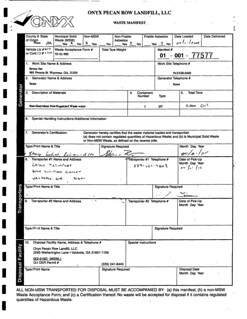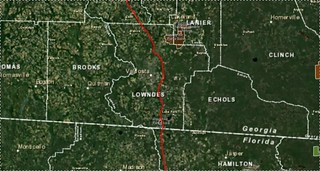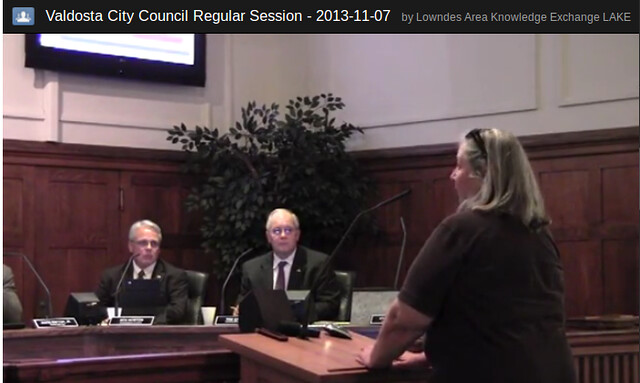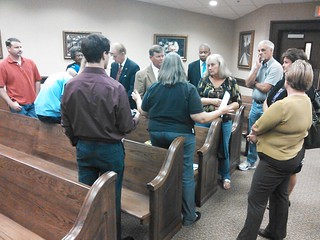 Given
dozens of questions submitted by citizens
and every opportunity,
Commissioners asked only four perfunctory questions after
Spectra Energy’s
Sabal Trail pipeline sales pitch.
Chairman Bill Slaughter repeatedly let multiple Spectra reps
speak from the audience without having them come to the podium,
or even identify themselves before they spoke.
They were pointed at by the chief Spectra speaker when he named them,
but they did not stand up or raise their hand at the time,
so it was quite hard to tell which was which.
The Chairman never allows that sort of behavior from local citizens.
Why is he granting extra courtesies to a company from Houston
that wants to exercise eminent domain on local citizens’ lands?
Who does the Lowndes County Commission represent?
Given
dozens of questions submitted by citizens
and every opportunity,
Commissioners asked only four perfunctory questions after
Spectra Energy’s
Sabal Trail pipeline sales pitch.
Chairman Bill Slaughter repeatedly let multiple Spectra reps
speak from the audience without having them come to the podium,
or even identify themselves before they spoke.
They were pointed at by the chief Spectra speaker when he named them,
but they did not stand up or raise their hand at the time,
so it was quite hard to tell which was which.
The Chairman never allows that sort of behavior from local citizens.
Why is he granting extra courtesies to a company from Houston
that wants to exercise eminent domain on local citizens’ lands?
Who does the Lowndes County Commission represent?
At least
WALB
and
WCTV
let a landowner speak: that’s more than the County Commission did.
Nottinghill is back yet again.
A Commissioner did ask staff whether it was really ready,
and it isn’t, but no Commissioners asked any such probing
questions of the Spectra reps.
The three
beer licenses, a
liquor license,
the
contracts, and the
bids were glossed over in almost as
perfunctory a manner.
There were some questions from Commissioners about
costs to the county government.
But there were none from Commissioners about costs to landowners
from gashing a pipeline through their property.
Given that there’s a
settlement for back pay for some county employees,
it appears that the employees maybe had to sue to get paid.
Staff did express concern about
“customer service” for a decorative
special tax lighting district, but none about service to the
landowners of the county whose land Spectra proposes to run through,
or for that matter to the taxpayers of the county to whom the
Commission and staff cannot be bothered to show what they’re voting
on before they vote.
Here’s
the agenda plus links to the videos and a few notes.
LOWNDES COUNTY BOARD OF COMMISSIONERS
WORK SESSION, MONDAY, DECEMBER 9, 2013, 8:30 a.m.
REGULAR SESSION, TUESDAY, DECEMBER 10, 2013, 5:30 p.m.
327 N. Ashley Street — 2nd Floor
Continue reading →
 The VDT let local citizens speak, unlike the Lowndes County Commission.
Perhaps the VDT, like many local citizens, does not think transparency
means what the County Commission thinks it means.
The VDT let local citizens speak, unlike the Lowndes County Commission.
Perhaps the VDT, like many local citizens, does not think transparency
means what the County Commission thinks it means.
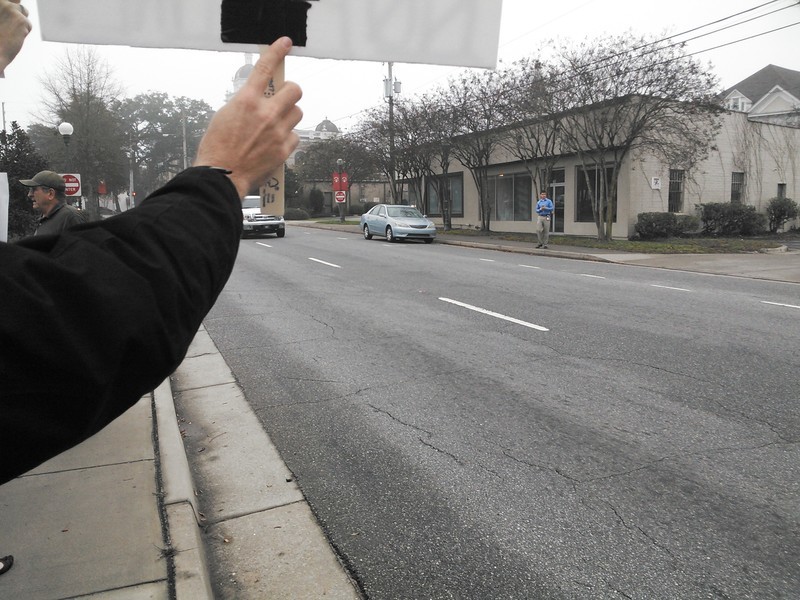 That’s Matthew Woody across the street taking that picture,
and
here are more pictures of the protesters.
That’s Matthew Woody across the street taking that picture,
and
here are more pictures of the protesters.
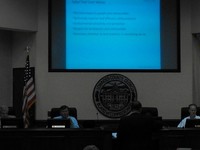 Really?
So why afterwards did both Brian Fahrenthold and Andra Grover Continue reading
Really?
So why afterwards did both Brian Fahrenthold and Andra Grover Continue reading 

